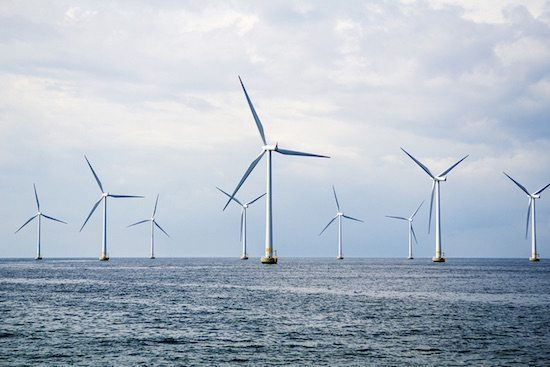The Dutch government has selected a zero-subsidy bid by Oranje Wind Power II to build the 760MW Hollandse Kust (west) offshore wind farm in the Dutch North Sea, which will include 600MW of onshore electrolysers for the production of green hydrogen.
The 760MW Hollandse Kust (west) Wind Farm Site VII is one of two new offshore wind farms due to become operational in the Dutch North Sea in 2026.
The Netherlands Enterprise Agency (RVO) announced late last week that Oranje Wind Power II, a subsidiary of German energy giant RWE, had been awarded the contract to build the 760MW offshore wind farm.
The bid, which required no government subsidy, will also include additional functionality. Among the plans is the development of 600MW of onshore electrolysers to produce green hydrogen, 225MW of e-boilers for district heating and industrial applications, batteries, and even a floating offshore solar energy plant.
Set to be located 50km off the coast of the Netherlands, Site VII will be located alongside Site VI in the growing Hollandse Kust (west) Wind Farm Zone, which upon development will boast capacity of 1.4GW.

“This new wind farm is another major step in making the Netherlands more sustainable,” said Rob Jetten, Netherlands’ minister for climate and energy.
“Wind energy is also very important for companies and industry that are increasingly electrifying their installations, replacing fossil fuels and raw materials,” Jetten said.
“With this project we are making another concrete step towards achieving the goal of 21GW of offshore wind energy around 2030.”
Energy to power one million homes
The original announcement from the RVO claimed that the offshore wind farm would house capacity of 700MW, but subsequent information from RWE confirms that capacity will be 760MW.
“Hollandse Kust West VII will seriously contribute to the energy transition by producing green electricity for almost one million Dutch homes,” said RWE CEO Markus Krebber.
“With our innovative concept we developed a blueprint for a new generation of offshore wind farms, which can be perfectly integrated into the energy system.”
European wind energy trade body WindEurope says the winning project provides further proof of using qualitative, non-price criteria. Instead, the qualitative criteria measures how well the wind farm will be integrated into the country’s energy system.
“It’s great the Dutch made so much use of non-price section criteria in their latest offshore wind auction.” said Giles Dickson, WindEurope CEO. “And it’s worked!
“They’ve shown you can get away from price-only auctions – and select a winner with measurable and objective non-price criteria, in this case on system integration.”










